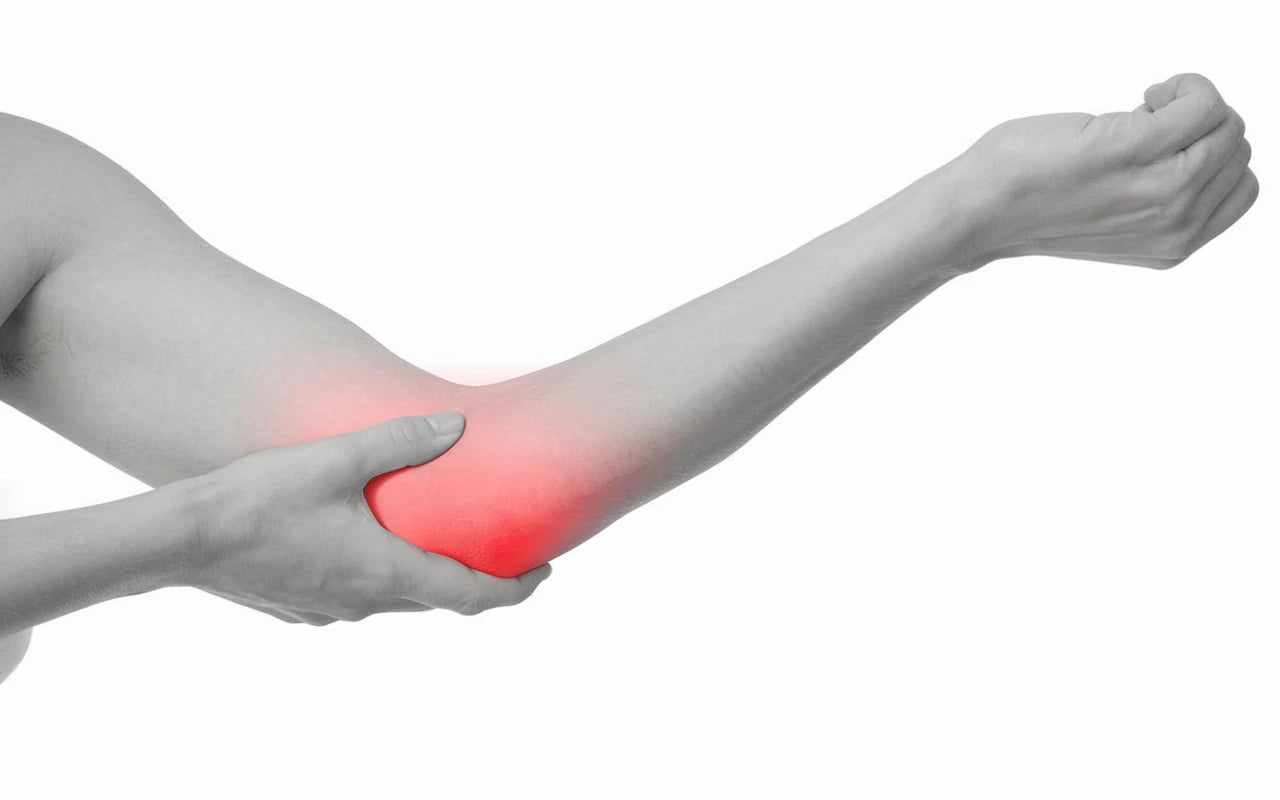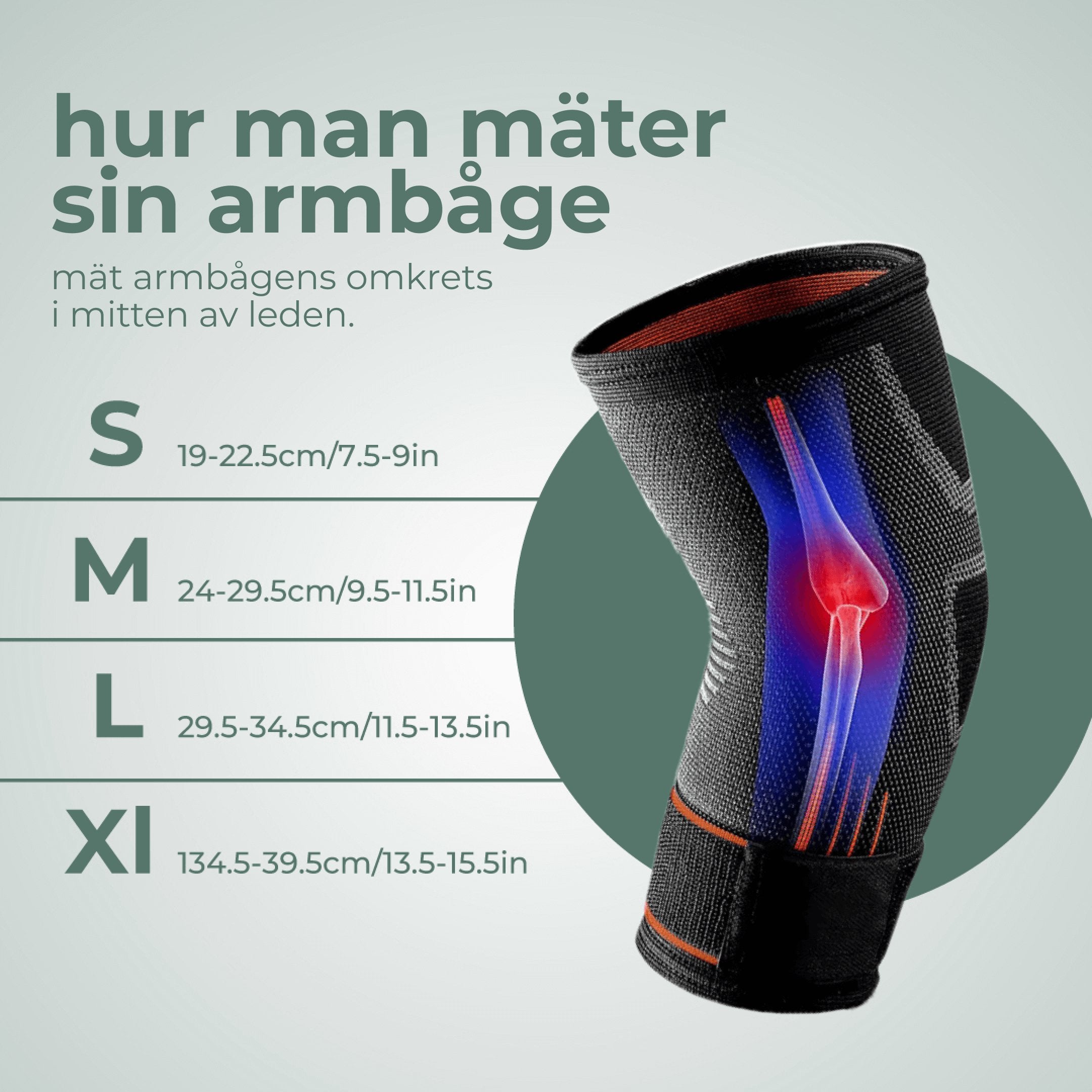Osteoarthritis in the Elbow: Symptoms, Causes, and Treatment

Elbow osteoarthritis, also known as elbow osteoarthritis, is a degenerative joint disease that affects the elbow joint. This condition can cause pain, stiffness, and limited mobility in the elbow. In this article, we will review the most common symptoms, causes, and treatment options for elbow osteoarthritis.
What is Elbow Osteoarthritis?
Elbow osteoarthritis is a degenerative joint disease in which the cartilage wears down, causing pain, stiffness, and reduced mobility. Treatment may include physical therapy, medication, and sometimes surgery.
Unlike osteoarthritis of the knee or osteoarthritis of the shoulder , osteoarthritis of the elbow is less common because the elbow is not a weight-bearing joint. However, the condition can still affect people with previous injuries or those who repeatedly put stress on the elbow in their profession or through sports activities. The articular cartilage in the elbow breaks down over time, which leads to friction between the bones in the joint and can cause inflammation of the elbow.
Symptoms of osteoarthritis in the elbow
Elbow osteoarthritis often develops gradually over time, and symptoms can vary in intensity. Common symptoms include:
- Elbow pain: Often the most prominent symptom.
- Stiffness: Especially in the morning or after extended periods of inactivity.
- Limited range of motion: Difficulty fully bending or extending the elbow.
- Swelling: Inflammation can lead to visible swelling around the elbow.
- Crepitations: Crackling or cracking sounds during movement.
- Weakness: Decreased muscle strength around the elbow due to pain.
Many patients describe that they experience pain in the elbow, especially during certain movements. The symptoms can be similar to tennis elbow or golfer's elbow, but differ in that the tenderness is often more generalized in the joint. Rest pain and night pain may occur in later stages. Numbness can also sometimes be experienced, but this is more often related to nerve compression than to the osteoarthritis itself.
Causes of osteoarthritis in the elbow
Several factors can contribute to the development of osteoarthritis in the elbow:
- Age: The risk increases with age as the joints are exposed to wear and tear.
- Previous injuries: Fractures or dislocations can increase the risk of osteoarthritis later.
- Overload: Repetitive movements or heavy loads (work/sports) can accelerate wear and tear.
- Genetics: Some people are more likely to develop osteoarthritis.
- Obesity: Can have an indirect effect through increased inflammation.
- Other diseases: Rheumatism may have similar symptoms but different underlying mechanisms.
It is important to rule out other conditions that can cause similar symptoms, such as joint infection or inflammatory joint diseases. The diagnosis is often made with a clinical examination and sometimes X-rays or MRI for confirmation. Numbness can also occur, but is more often related to nerve compression than to the osteoarthritis itself.
Diagnosis and treatment of osteoarthritis of the elbow
Osteoarthritis of the elbow can cause pain, stiffness and limited mobility. For treatment to be effective, the correct diagnosis and a combination of methods that relieve symptoms and make everyday life easier are required. Here are the most common options:
1. Physiotherapy
Description: Training program with exercises to strengthen muscles and increase mobility in the elbow.
Benefits: Supports the joint during exercise, promotes proper movement and can slow the progression of symptoms.
2. Pain relief
Description: Anti-inflammatory drugs as needed, often in the form of NSAIDs.
Benefits: Can reduce the need for stronger medications when combined with a good elbow support that provides natural relief.
3. Lifestyle changes
Description: Adapting activities to reduce strain on the elbow. This could involve ergonomics at work or adjustments in training.
Benefits: Elbow support makes it easier to perform daily activities with less pain and stability in the joint.
4. Heat and cooling treatment
Description: Relieves stiffness and pain using heating pads, cold packs or alternating treatment.
Benefits: Complements other treatments by providing stable support and reducing stiffness.
Important to know
There is no cure for osteoarthritis yet, but research is ongoing. For more severe cases, injections of cortisone or hyaluronic acid may be given to reduce inflammation and improve mobility. In some cases, arthroscopy, a minimally invasive surgery in which the doctor inspects and cleans the joint, is used. These methods often provide temporary relief but can be valuable in acute symptoms.

How Elbow Brace Can Help With Elbow Osteoarthritis
The elbow support offers several benefits for people suffering from osteoarthritis in the elbow:
- Provides support and stability to the affected elbow, which can reduce pain during movement and strain.
- Helps distribute pressure evenly across the joint, which can reduce pressure points and irritation.
- Can be used during daily activities to provide continuous support and reduce joint overload.
- Supports rehabilitation exercises and can help maintain joint mobility.
- Prevents further damage by limiting extreme movements that can worsen osteoarthritis.
Many patients with elbow osteoarthritis also experience similar problems in other joints, such as fingers or knee osteoarthritis . By using appropriate supports for each affected joint, the overall load on the body can be reduced, which can contribute to a better quality of life. Especially when there are tender points around the elbow joint, a support can reduce direct pressure that aggravates the discomfort.
Buy nowConclusion
Elbow osteoarthritis can be a painful and limiting condition, but with the right treatment and support, many people can effectively manage their symptoms and maintain good elbow function. By combining medical treatments, physical therapy, and the use of supportive devices such as the Elbow Brace, many people can experience an improved quality of life. It is important to work closely with a healthcare professional to develop an individualized treatment plan and to regularly evaluate and adjust treatment as needed.
Osteoarthritis treatment focuses on symptom relief and functional improvement, rather than curing the condition completely. By understanding the symptoms and possible treatments, patients can make informed choices about their care and take an active role in managing their disease.
Frequently Asked Questions (FAQ)
Can osteoarthritis in the elbow be completely cured?
Osteoarthritis cannot be completely cured, but the symptoms can often be managed effectively with the right treatment and lifestyle adjustments.
How often should I use the Elbow Support for osteoarthritis?
Frequency of use may vary, but many people find it beneficial to use the brace during activities that put stress on the elbow and when exercising. Consult your doctor or physical therapist for personalized recommendations.
Can exercise worsen osteoarthritis in the elbow?
The right type of exercise can actually be beneficial for osteoarthritis. Low-impact exercises and strength training can help strengthen the muscles around the joint and improve mobility.
Is surgery necessary for osteoarthritis of the elbow?
Surgery is usually only considered in severe cases where conservative treatment has not provided sufficient relief. Most cases can be managed without surgery.
Can diet affect osteoarthritis in the elbow?
A balanced diet rich in anti-inflammatory foods can potentially help reduce inflammation in the body, which may indirectly have a positive impact on osteoarthritis. Consult a dietitian for personalized dietary advice.

